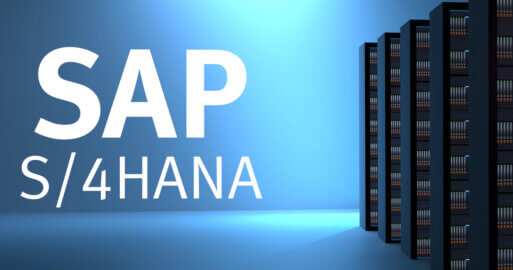SEEBURGER SAP Add-Ons for optimized workflow management

E-mail floods and meeting marathons are the biggest productivity killers in one’s everyday working life. They are not only annoying, they can ultimately even cause illness – more and more people are suffering from burnout syndrome. Sophisticated workflow management as well as digitalized and automated processes based on workflow tools and SAP add-ons ensure efficient and structured work. On top of that, they improve the performance, health and satisfaction of employees. These goals can be achieved in just two steps.
Defined workflows in everyday office life enhance the efficiency and health of your employees
What would your ideal working routine look like? How many e-mails can you process per day? How many meetings can you attend per week and still keep concentration levels high to focus on your projects? These abilities certainly differ from one individual to another. But in the end it comes down to one thing: receiving an unmanageable number of e-mails and invitations to meetings and conference calls, in which you are often only marginally involved, prevents concentrated and efficient work. The rampant need for communication is often rooted in inefficient processes, resulting errors and misunderstandings that need to be rectified, or unclearly defined responsibilities.
On the top floors of a company, these conditions are accepted day in, day out, not without complaint, but usually without consequences. On shop floors, on the other hand, people started very early on to structure and optimize processes and to establish and manage workflows. This significantly increased the efficiency of these processes and thus the efficiency of the workers involved. These improvements can also be achieved in one’s working life in just two basic steps:
- Structure, analyse and improve processes
- Digitalize and automate processes – workflow management
These two steps are explained in detail below:
1. Structure, analyse and improve processes
The 5S method originates from the Toyota Production System and was developed to improve processes by keeping the workplace clean and tidy, thus ensuring trouble-free and high-quality work. This method is not only useful in the production hall, it can also be easily transferred to everyday working life. A tidy desk, a well-organised desktop and a structured inbox keep your head clear and create space for concentrated and efficient work. A precise definition of responsibilities and clear procedural instructions significantly reduce the number of e-mails and the need for meetings and telephone calls scheduled at short notice.
The 5S method provides a good basis for rethinking and optimizing work processes.
The following table describes the individual designations and their possible solutions:
| Japanese | English | Meaning |
| SEIRI | Sort | Sort out all unnecessary information and applications in the work environment. |
| SEITON | Set in order | The remaining information is sorted. This creates a common understanding of what information is actually needed. The aim is to provide optimal access to the necessary information in order to process it with the appropriate applications. |
| SEISO | Shine | The aim is to regularly clean the workplace/desktop from unnecessary information and applications and to keep it clean. The clean workplace is also a symbol of the quality of the work performed. |
| SEIKETSU | Standardize | The optimized process, workplace organization and order is declared to be standard. The sorted, clean and orderly condition is maintained. |
| SHITSUKE | Sustain | The presented methods are consistently adhered to every day. The next level of the 5S method is reached by initiating another run of the 5S, in which an even higher level of the desired state is reached. |
This will provide a detailed overview of:
- Who does what
- Which information is generated where
- Which information is needed at what time and where, with how much information density and what information content
On this basis, new, optimized information and meeting structures as well as business processes can be defined and implemented – initially within departments, then across interfaces and finally company-wide.
Now follows the second step:
2. Digitalize and automate processes – ERP-integrated workflow management
In this step, the digitalization of the processes can be started. This is not about reinventing the wheel, but rather – if only for cost reasons – drawing on existing functionalities wherever possible.
With the generic SAP Business Workflow, for example, SAP provides a framework with which you can map and further optimize your own processes. SAP does not just consist of individual transactions that can be used. Rather, you can also regard the individual modules behind the transactions as separate functions that can be integrated into the respective process steps. If a function does not yet exist, it is created from scratch.
Application of the generic SAP workflow using the SEEBURGER workflow tools
SEEBURGER’s generic SAP Workflow, which is based on the SAP Business Workflow, provides a good basis for automating well-structured processes by mapping them using the generic workflow. Simple release or approval procedures can be mapped, as well as more complex business processes in which different departments work together. This completely generic approach is ground-breaking. Workflow management can be designed by the user department itself using a customizing guide.
This means that the specialist department does not require ABAP programming knowledge or workflow expert knowledge to configure the workflows. Users are thus supported during the design process by intelligent user determination and process control, which can be based on the content of the document. For example, you can define that invoices over EUR 100,000 are released using the principle of six parties verification and those under EUR 100,000 using the principle of four parties verification. Invoices originating from IT suppliers can be forwarded directly to the IT department for approval. This ensures consistency by automatically controlling pre-defined processes and forwarding documents directly to the appropriate person. This new generation of workflows combines many of the practical features and functions in one central solution:
- Agent Finding Management
- Escalation Management
- Addressing Mobile Devices
- Logging Management
- Management Reporting
SEEBURGER offers pre-assembled workflows based on the generic SEEBURGER workflow:
- Purchase requisition release
- Order release
- Invoice approval
- Various master data change releases
Advantages of the generic SEEBURGER workflow
- Exceptional cases can be automated through user interaction (ordering procedure). For example, you can intervene ad-hoc in a business process and change processes if necessary.
- The workflows can be extended to external parties, customers and suppliers.
- The optimal and integrated stream of data in the workflow creates the technical framework for reducing the processing times for authorization procedures. Furthermore, an individually configurable escalation management exists. If the user fails to react, they receive an automatic reminder. If they fail to react again, the escalation continues automatically to the next escalation level and so on until the next predefined step takes effect.
- Queries are processed faster and more reliably.
- Incorrectly executed processes automatically enter an escalation loop for correction.
- The status of a process can be called up at any time and all process steps are documented.
- Processes are revised, standardised and often optimised on the basis of the experience of those involved in the process.
- The person who is responsible for the release of accounts and authorisations is involved in the procedure and can fulfil their task.
We have compiled many interesting articles on our solutions for SAP users in the blog area of our website.
Increase efficiency and reduce costs with workflow tools
It is worthwhile to regularly analyse and improve the work processes in a company. Processes that have been streamlined and optimised using the 5S method can be easily merged and managed in workflows and automated in digital processes using the corresponding tools from SEEBURGER and SAP. In this way, the efficiency of your work processes are continuously increased. Your employees are given the opportunity to work on their projects in a concentrated manner and thus deliver better results. This not only increases the health and satisfaction of employees, but also your ROI in the medium term.
Thank you for your message
We appreciate your interest in SEEBURGER
Get in contact with us:
Please enter details about your project in the message section so we can direct your inquiry to the right consultant.
Written by: Rolf Holicki
Rolf Holicki, Director BU E-Invoicing, SAP&Web Process, is responsible for the SAP/WEB applications and digitization expert. He has more than 25 years of experience in e-invoicing, SAP, Workflow and business process automation. Rolf Holicki has been with SEEBURGER since 2005.





